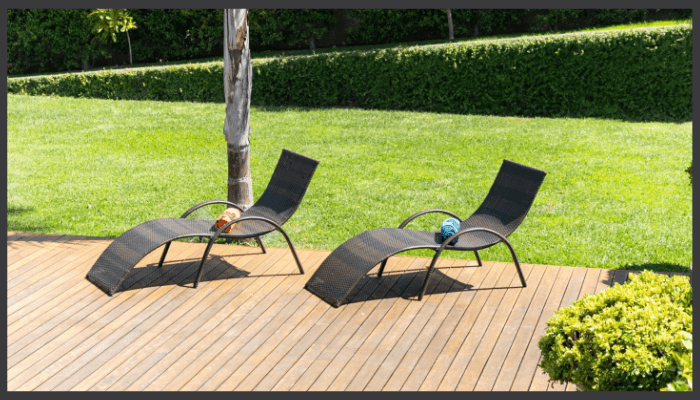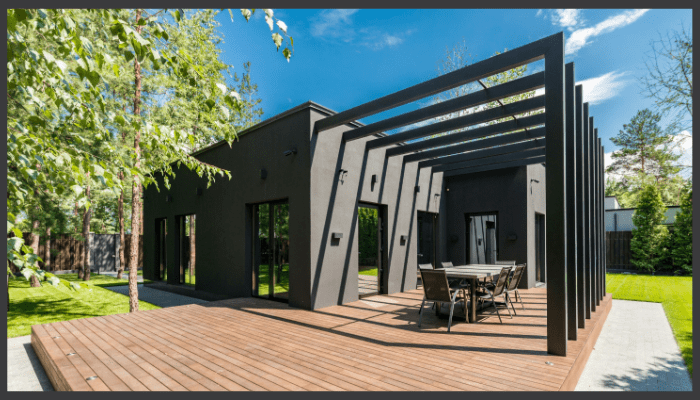How to Build a Small Spotted Gum Deck Without Damaging Your Garden Trees
Table of Contents:
- Strategic Pre-construction Planning and NSW Compliance
- Defining and Protecting the Root System (as 4970-2009)
- Low-impact Foundation Engineering
- Deck Design Principles for Tree-friendly Outcomes
- Selecting Spotted Gum and Complementary Materials
- Construction Workflow and Best Practices
- Finishing and Long-term Maintenance
- Design Inspiration and Integration With Garden
- Conclusion
- Frequently Asked Questions
Strategic Pre-Construction Planning and NSW Compliance
Before grabbing your tools for deck construction, understand that NSW legally protects trees. Ignore local rules and you'll cop massive fines plus wreck your garden.
Trees as Protected Assets in NSW
The Environmental Planning and Assessment Act 1979 lets local councils enforce Tree Preservation Orders. These orders protect existing vegetation.
Cut roots, prune, or remove trees without permission and fines hit $110,000. That's why tree preservation belongs in your deck design from day one.
Exempt Development and Its Limits
Small deck projects often qualify as Exempt Development when they're under 25 square metres and stay below 1 metre above ground level.
But touch a tree's roots or canopy and you lose exempt status instantly. Then you need a Complying Development Certificate or Development Application.
Check your local council's planning portal before starting any outdoor area work.
Engage a Qualified Consulting Arborist
Building near established trees requires an AQF Level 5 Consulting Arborist. This certified expert checks the Tree Protection Zone.
They prepare an Arboricultural Impact Assessment and oversee careful construction stages. Their involvement keeps your dream deck compliant and environmentally sound.
Defining and Protecting the Root System (AS 4970-2009)

Australian Standard AS 4970-2009 – Protection of Trees on Development Sites provides the technical foundation for building safely around trees.
It defines how to identify, measure, and protect critical root zones during construction.
Root Biology and Construction Impact
Tree roots spread horizontally near the surface. These fine roots grab water and nutrients. Excavation, compaction, or grade changes suffocate or cut them, causing long term decline.
Keep heavy machinery and materials away from root zones to prevent soil compaction.
Tree Protection Zone (TPZ) and Structural Root Zone (SRZ)
Calculate TPZ as 12 times the tree's trunk diameter (measured 1.4 metres above ground). The Structural Root Zone is the smaller core area essential for stability.
Encroaching more than 10% into the TPZ is a major issue. This triggers an assessment and requires low-impact construction methods.
Mitigation Strategies for Sensitive Root Zones
-
Install protective fencing around the TPZ before starting site work.
-
Use hand tools or air excavation near roots instead of mechanical digging.
-
Spread wood chips or lay steel plates preventing soil compaction.
-
Keep soil levels unchanged within the TPZ.
Following these steps protects root health and ensures your garden trees survive long term alongside your new deck.
Low-Impact Foundation Engineering
Traditional concrete footings wreck roots badly. Lucky for you, modern low impact foundation systems support your timber deck while keeping trees stable.
Why Traditional Concrete Footings Fail in Root Zones
Concrete piers require deep digging. This cuts through big branch roots and disrupts soil hydrology. Trees weaken over time, your outdoor living space becomes unstable.
That's why no dig or minimal dig systems work better within the TPZ.
Screw Piles vs Surface-Mounted Blocks
Screw piles are galvanised steel shafts twisting into the ground with minimal disturbance. They move small roots aside instead of cutting them. This gives great load capacity for suspended or raised deck boards.
For low level decks, surface mounted foundation blocks like TuffBlocks sit directly on stable ground. No excavation, less soil compaction risk. Perfect for creating a durable deck in sensitive root zones that needs less maintenance.
Deck Design Principles for Tree-Friendly Outcomes
Designing your small deck around living trees needs flexibility, ventilation, and thinking ahead.
Smart Layout for a Small Deck
A multi level deck or split level structure makes trees focal points while maintaining airflow. Raising the deck a bit allows fresh air to flow. This helps keep your timber decking boards and roots safe from moisture buildup in your outdoor space.
Framing Around a Growing Trunk
Leave at least 25mm gap between trunk and deck boards for natural growth. Fast growing species need removable perimeter frames you can expand later.
Joist hangers and stainless steel screws make modifications easier as trees mature in your backyard.
Selecting Spotted Gum and Complementary Materials
Spotted Gum (Corymbia maculata) is one of Australia’s strongest hardwoods.
It’s valued for its durability and beauty and when weighing up spotted gum vs merbau, many NSW homeowners prefer Spotted Gum for its sustainable sourcing and long-term performance in outdoor environments.
Why Spotted Gum Excels
Spotted gum deck materials boast Class 1 durability rating, 40 plus year lifespan, and natural termite resistance.
Low tannin content prevents staining on surrounding surfaces, perfect for decks near trees or garden beds. BAL 29 compliant too, suitable for bushfire prone areas.
Compatible Hardware and Maintenance
Use stainless steel screws and pre drill all fixings preventing splits. Use pigmented decking oil to protect against the harsh Australian sun.
It enhances color and reduces surface cracking. Annual cleaning and re oiling maintains natural beauty and extends your outdoor oasis lifespan.
Construction Workflow and Best Practices
A well planned build sequence ensures compliance and reduces risk to surrounding vegetation.
Install Tree Protection First
Put temporary fencing around the TPZ first thing. Establish no go zones for machinery. Lay mulch or protective matting to preserve soil structure before you bring in materials.
Footing and Frame Installation
Your arborist gives root mapping guidance before driving screw piles or placing surface blocks. Keep foundations above or around the root zone, never through it. Support posts go where roots aren't.
Decking and Tree Opening
Laying timber decking boards needs properly spaced gaps (3 to 6mm) for drainage and air movement.
The opening around the tree trunk stays flexible and adjustable. Essential tools here include your spirit level and careful planning.
Finishing and Long-Term Maintenance
Get the finishing right for appearance and performance on your spotted gum deck proper sealing and maintenance can significantly extend its average lifespan and preserve its natural colour.
Prepare and Seal Spotted Gum Boards
Let natural timber weather several weeks or wash with deck preparation solution removing surface oils. Once dry, apply quality oil based sealers formulated for hardwoods protecting against UV rays and moisture.
Ongoing Inspection and Tree Monitoring
Annual maintenance checks involve:
-
Resealing the deck surface.
-
Ensuring trunk gap stays open.
-
Checking for rot or poor ventilation.
Airflow under your outdoor space prevents mould, stops timber movement, and keeps roots healthy. A spotted gum deck cupped after being covered is a common sign of poor ventilation keeping your deck open to airflow prevents this and ensures long-term stability.
Design Inspiration and Integration with Garden
Add potted plants, built-in seating, or outdoor furniture to enhance your natural timber look. Incorporate lighting and different materials defining entertaining areas and creating visual interest.
Mixing the natural beauty of spotted gum with your current structures makes your outdoor space inviting. It feels both harmonious and sustainable.
Conclusion
A small spotted gum deck built around trees shows a balance of skill and care for the environment.
To build a lasting deck, follow these steps:
-
Stick to Australian Standards.
-
Work with certified arborists.
-
Use low-impact foundation methods.
This way, your backyard will shine for years!
Your outdoor enjoyment space works with nature, not against it.
Frequently Asked Questions
Can I build a deck close to a tree in NSW without council approval?
Only if it qualifies as exempt development and doesn't disturb roots or canopy. Otherwise, council approval's required.
What is the Tree Protection Zone (TPZ)?
The protected area surrounding a tree's base, defined in AS 4970-2009. Construction's restricted here to prevent root damage.
Is Spotted Gum suitable for bushfire-prone areas?
Yes, spotted gum's BAL 29 compliant, suitable for many NSW bushfire zones.
What type of foundation should I use near tree roots?
Low impact systems like screw piles or surface mounted deck blocks avoid cutting critical roots.
How can I maintain a Spotted Gum deck?
-
Clean regularly.
-
Reseal each year with oil-based decking products.
-
Check airflow underneath to reduce moisture damage.
How much clearance should I leave around the tree trunk?
At least 25mm, allowing expansion as trunk grows preventing structural damage.
What are the benefits of a ventilated deck design?
Proper ventilation prevents timber decay, reduces humidity under deck, keeps roots healthy.




